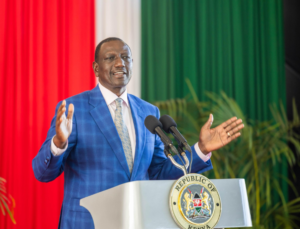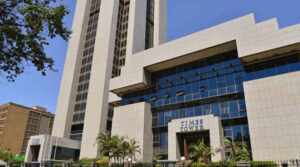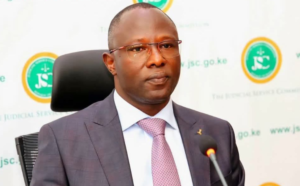Mobile Service Providers Earn Billions As Kenyans Spend More Time On The Phone

The total revenue earned by mobile service providers increased by 8.5 per cent to Ksh 252.3 billion in the past twelve months to June 2018, the latest ICT sector statistic report released by the industry regulator indicates.
The figure is cumulative revenues from voice, data, SMS, mobile money transfer services, mobile termination rates, roaming charges, infrastructure leasing and handsets sales, among other services provided by mobile network operators..
According to the report, voice still remains the dominant revenue generator at 41.7 per cent. “It is evident that the revenue ratio of traditional mobile voice service is dominant at 41.7 percent of the total revenue,” read part of the report.
The value of investment made by operators rose to Ksh 41.52 billion in 2017/18 from Ksh 40.98 billion reported in 2016/17. The number of employees working in the mobile service sector increased from 6,907 reported last financial year to 7,016 in 2017/18.
While, the revenue from voice still contributes the largest potion of the total revenue, research predicts that data and mobile money services are more promising revenue streams for the mobile services providers in the future. It probably explains heavy investments in the broadband infrastructure across the country and the quest for more financial inclusion.
As at 30thJune 2018, the number of mobile service subscriptions in the country stood at 45.5 million, translating to an increase of 13.2 percent when compared to the 40.2 million subscriptions recorded as at 30th June 2017. This marked a 9.1% increase in penetration in the financial year.
Read: Liquid Telecom Appoints Adil Youssefi As New Regional CEO Of East Africa
High-speed fibre subscriptions doubled during the financial year 2017/18 to stand at 135,964 from 54,700 subscriptions posted last year driven by high demand for high video definition streaming and increased competition among service providers.
Satellite subscriptions have also increased significantly since the last fiscal year. The increase is attributed to the Universal Service Fund (USF) School Broadband Connectivity project by the Authority. The connectivity partially rides on satellite technology with over 800 public secondary schools connected in the 2017/18 financial year.
Broadband subscriptions continued to record an upward trend as witnessed in the quarter that ended in June 2018. The number of broadband subscriptions rose by 3.0 percent to 20.5 million up from 19.9 million recorded in the third quarter. The report attributes the rise to increased roll out of 4G network and expansion of last mile fibre network. The demand for broadband services has also increased especially in driving the academic community, entrepreneurship and video streaming. By the end of 30th June2018, broadband penetration stood at 43.9 per 100 inhabitants.
As at 30th June 2018, the number of active mobile money transfer subscriptions and agents stood at 29.6 million and 206,940 respectively. Similarly, 727.0 million transactions valued at 1.9 trillion Kenya Shillings were made between 1st April 2018 and 30th June 2018. In addition, the value of goods and services transacted over mobile platform amounted to 1.4 trillion Kenya shillings. A total of 675.5 billion Kenya shillings moved from Person to Person.
The traditional mobile SMS service in Kenya has maintained an upward trend over the years despite increased us of over-the-top services such as WhatsApp.
This growth is mainly attributed to the competitive retail SMS tariffs coupled with lucrative SMS bundles offered by the various mobile operators. During the fiscal year under review, total on-net and off net messages stood at 66.8 billion marking an increase of 17.8 percent from the previous financial year.
The postal/courier sub sector also demonstrated its potential with private courier outlets increasing from 997 to 1,027
2017/18 was a year marked with growth in all areas indicating a prospective sector. With the growing appetite for internet in the country, the horizon is bright considering the available international bandwith capacity of 3,277.720 Gbps and the underutilization of the same to date. The report shows that at the end of the year on 30th June 2018, only 931.370 Gbps was in use.






